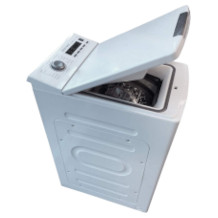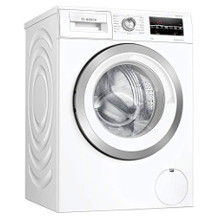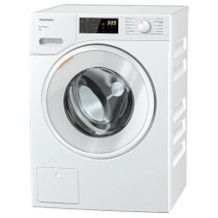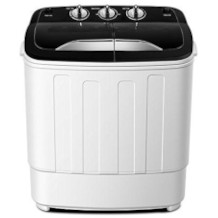Heat pump tumble dryer purchasing advice: how to choose the right product
- What You Need to Know
- Heat pump dryers are a further development of condensation dryers and are much more energy efficient. Most heat pump dryers belong to energy efficiency class A or higher.
- Consumers who have too little space for a freestanding heat pump dryer choose a column-mounted or under-counter model.
- Before buying, you should think carefully about the capacity you need. If you choose too large or too small, the dryer will consume unnecessary energy.
- The capacity of a tumble dryer does not refer to dry laundry as with a washing machine, but to wet laundry.
What advantages does the tumble dryer offer over the clothesline?
Sun and fresh air dry the laundry completely free of charge and without harming the environment. However, the weather does not always play along. A sudden rain shower and the just-dried laundry is wet again. Moreover, not everyone has a garden in front of their door or enough space on the balcony to set up a clothes horse. Even inside your own four walls, a clothes horse takes up a lot of space and is usually in the way. In the worst case, mould can even form on the walls due to the accumulation of moisture in the laundry during drying.
The advantages of a tumble dryer
- Require comparatively little space
- Dry the laundry quickly and reliably
- Independent of the weather
- No need to hang up laundry
How does a heat pump dryer work and what are its advantages?
The most modern dryer variants are currently so-called heat pump dryers. As their name suggests, these dryers work with a heat pump. This means they dry the laundry in a particularly energy-saving way, which gives them a big advantage over other types of dryers that consume significantly more energy and are less economical.
The operating principle of tumble dryers: Warm air absorbs moisture
Basically, all tumble dryers make use of the physical properties of steam pressure. The steam pressure changes with the temperature. It is lower in cold air than in warm air, which is why warm air can absorb more water molecules.
Electric tumble dryers therefore heat the air inside them and guide it through the damp laundry so that it removes the moisture from it. The various types of dryers differ only in how they implement this basic principle.
The oldest type of dryer, the so-called exhaust air dryer, directs the warm and humid air outside via an exhaust air hose. On the one hand, this is impractical because users are very limited in their choice of location for the dryer. There must be a window or access to an exhaust air system within easy reach for the hose. Secondly, exhaust-air dryers consume a lot of energy. This type of dryer is now considered obsolete and is rarely seen on the market.
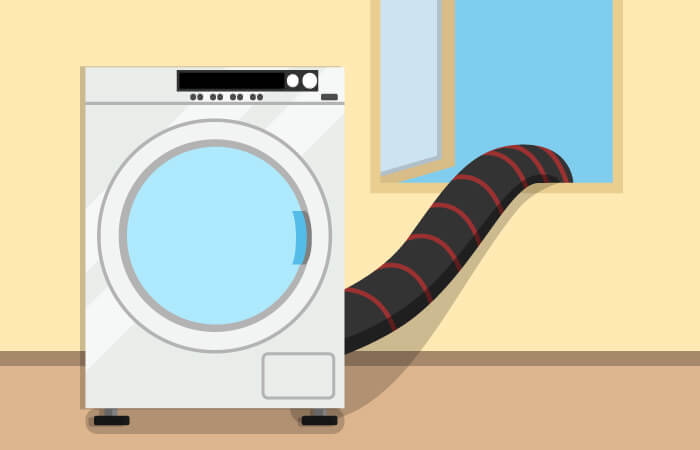
Allow moisture to condense instead of dissipating it
The exhaust air dryer system is therefore not optimal. Further development was needed, and this did happen: so-called condensation dryers, also known as condensation dryers, gradually replaced the exhaust air dryers.
Condensation dryers cool the warm, humid air with cold ambient air. In the process, the moisture condenses and is pumped into a container that users empty regularly. The remaining heat is released into the environment. There is no longer any need for an exhaust to the outside, which gives users much more flexibility in choosing the location of the dryer. However, condensation dryers still consume a lot of electricity. The solution: a heat pump.
How often do I have to empty the water tank?
The intervals at which users need to empty the water tank of their condenser dryer basically depend on the frequency of use and the residual moisture of the laundry. Usually, emptying is due after every two to four drying cycles. However, it is advisable to check the container after each programme run.
Energy-efficient: Continue to use the exhaust air heat
The heat pump dryer, also called a condensation dryer with heat pump, is a modern, energy-saving variant of the condensation dryer. The first functional cycle of heating air, removing moisture from the laundry, cooling air, condensing moisture and discharging it is followed by the heat pump cycle.
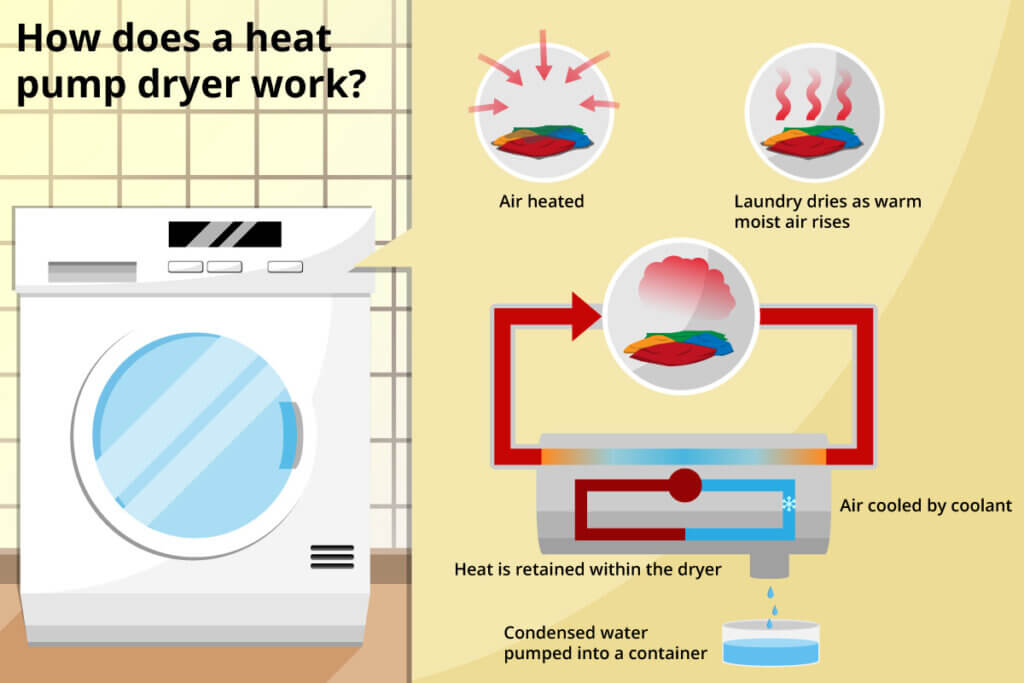
The eponymous heat pump extracts heat from the air in the condenser with the help of a refrigerant and stores it to reuse it for reheating the air. Accordingly, heat pump dryers do not emit any exhaust heat to their surroundings and consume significantly less electricity than condensation dryers without a heat pump. They are also more economical in energy consumption than, for example, a heating element.
Heat pump dryer vs. classic condensation dryer
Unlike condenser dryers without a heat pump, which at best achieve energy efficiency class B, heat pump dryers are class A or better (A+, A++ or A+++). Depending on the model, this means savings of up to 50 per cent on annual electricity costs. The high energy efficiency is probably the biggest, but not the only advantage of heat pump dryers. They dry laundry more gently than the other types of dryers because they work with lower heat. While condensation dryers without heat pumps only dry efficiently in cool environments, models with heat pumps do so regardless of their location. Moreover, the latter do not give off heat to their surroundings. This is an advantage especially on warm days and in small rooms.
One disadvantage of modern heat pump dryers, however, is their comparatively high purchase price. In addition, they need a little more time than condensation dryers because they dry more gently.
The following overview summarises the most important advantages and disadvantages of heat pump dryers:
Pro Points
- Low power consumption
- High energy efficiency
- Dries the laundry very gently
- Efficiency is independent of location
- Does not require exhaust air
Drawbacks
- Comparatively expensive
- Drying process sometimes takes longer
The price difference: acquisition and electricity costs
Even though the prices of condensation dryers with and without heat pumps have converged in recent years, heat pump dryers are still significantly more expensive. While most commercially available condensation dryers without heat pumps cost between 200 and 600 euros, users should budget at least 600 euros for a good heat pump dryer. High-quality heat-pump dryers from Miele cost around 850 to 2,500 euros, depending on the model. Bauknecht and Gorenje models, on the other hand, are less expensive.
However, users should not forget the significant electricity savings that a heat pump unit brings. Depending on the model and frequency of use, the higher purchase costs can pay for themselves within a few years thanks to the lower electricity bill. The following example shows a comparison of the electricity and purchase costs of a condenser dryer without and one with a heat pump. The electricity consumption is based on the standard programme “cotton cupboard dry” with a full load. Both models have a capacity of seven kilograms. We also assume 160 drying cycles per year (corresponds to an average of three cycles per week) and a price of 27 cents per kilowatt hour of electricity.
| Dryer type | Condenser dryer | Heat pump dryer |
| Example model | Beko DC 7130 N | Siemens iQ300 WT45RVA1 |
| Energy efficiency class | B | A++ |
| Price per dryer cycle (with full load) | 1,14 € | 0,46 € |
| Electricity costs in 10 years | 1.824,00 € | 736,00 € |
| Acquisition price | 439,00 € | 889,00 € |
| Total costs in 10 years | 2.263,00 € | 1.635,00 € |
| Savings after 10 years | – | 628,00 € |
Different types and sizes: How to find the right dryer for you
The market offers a wide range of different dryer models. It is not easy to keep an overview and make the right purchase decision. We recommend that undecided consumers first answer the following questions:
- How much laundry should be dried in one programme run?
- Where can the dryer be placed?
Choose the right loading capacity
As with the washing machine, the maximum load capacity is one of the most important purchasing criteria when choosing a tumble dryer. It indicates in kilograms the maximum amount of damp laundry the model can dry in one cycle.
The right decision saves money
If consumers choose a capacity that is too large, they will only fill the drum of their dryer part of the time. As a result, the appliance consumes an unnecessary amount of energy. If, on the other hand, the capacity is too small, they have to divide their laundry over several programme runs and also consume more energy than necessary. In short: consumers who can estimate as accurately as possible what load capacity they need save electricity and thus money.
Note the difference to the washing machine
While the maximum load capacity of a washing machine refers to dry laundry, the capacity of a tumble dryer refers to wet laundry. If you want to dry the entire load of washed laundry, you must make sure when choosing your dryer that the capacity of the appliance is correspondingly larger than that of your washing machine.
Which factors influence the required loading capacity?
The load capacity consumers need depends on their laundry load. Most heat pump dryers on the market have a maximum load capacity of seven or eight kilograms. These capacities are well suited for families of three to four with a high laundry load. But larger families with low to medium laundry loads should also do well. There are also smaller dryers on the market with a capacity of three to six kilograms, as well as larger models.
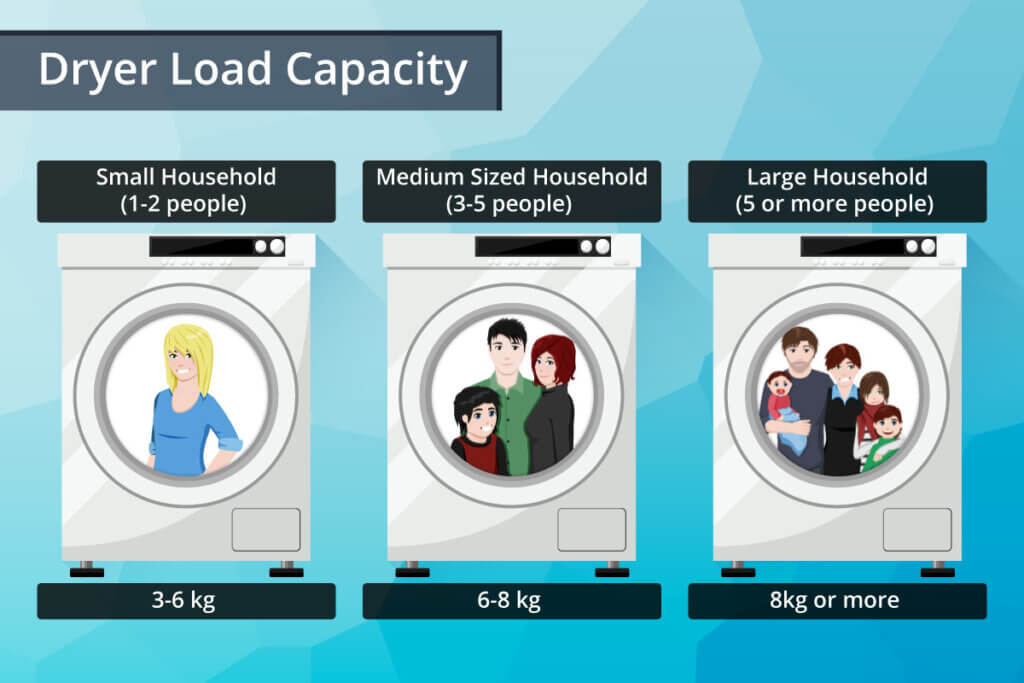
Where does the tumble dryer fit?
Freestanding dryers
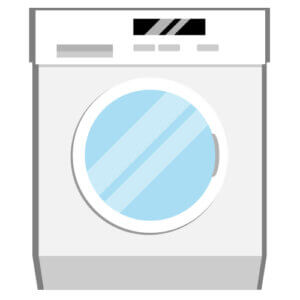
Freestanding dryers
Classic front-loading dryers are freestanding models and require comparatively large floor space. However, as long as this is available and there is a power socket nearby, users are flexible in their choice of location. Most freestanding heat pump dryers have a surface area of 60 x 60 centimetres and are 85 centimetres high.
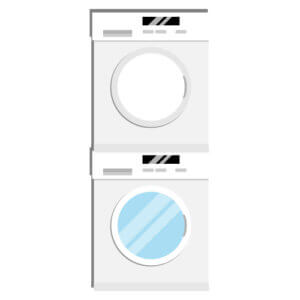
Column dryers
For users who do not have enough space next to their washing machine for a freestanding dryer, a column-mounted model is a good solution. Column-mounted dryers can be placed on top of the washing machine to take advantage of the height of the room. Users must ensure that the footprint of the dryer is no larger than that of the washing machine below. In addition, an attachment is necessary for the stable connection of the two appliances.
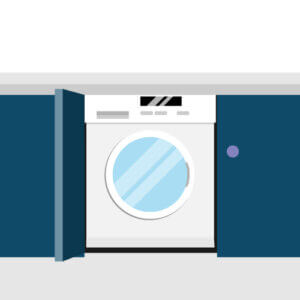
Undercounter dryers
Undercounter heat pump dryers are characterised by a removable top plate and can be integrated under the kitchen worktop. For this, users need an under-counter panel that takes the place of the top plate and protects the technical components of the dryer.
Washing machines and condenser dryers without heat pumps are also available as slimline top-loaders that are filled from the top instead of the front. In contrast, at least the European market offers heat pump dryers only in the front-loading design.
What does the energy label reveal?
According to the Energy Consumption Labelling Act, large electrical appliances such as refrigerators, dishwashers, washing machines and also tumble dryers must bear an energy label. This label summarises the most important technical data of the appliance and thus makes it easier for consumers to compare different models.
The top line of the energy label for tumble dryers shows the name of the manufacturer or the brand and the name of the model. The other information on the energy label is explained below.
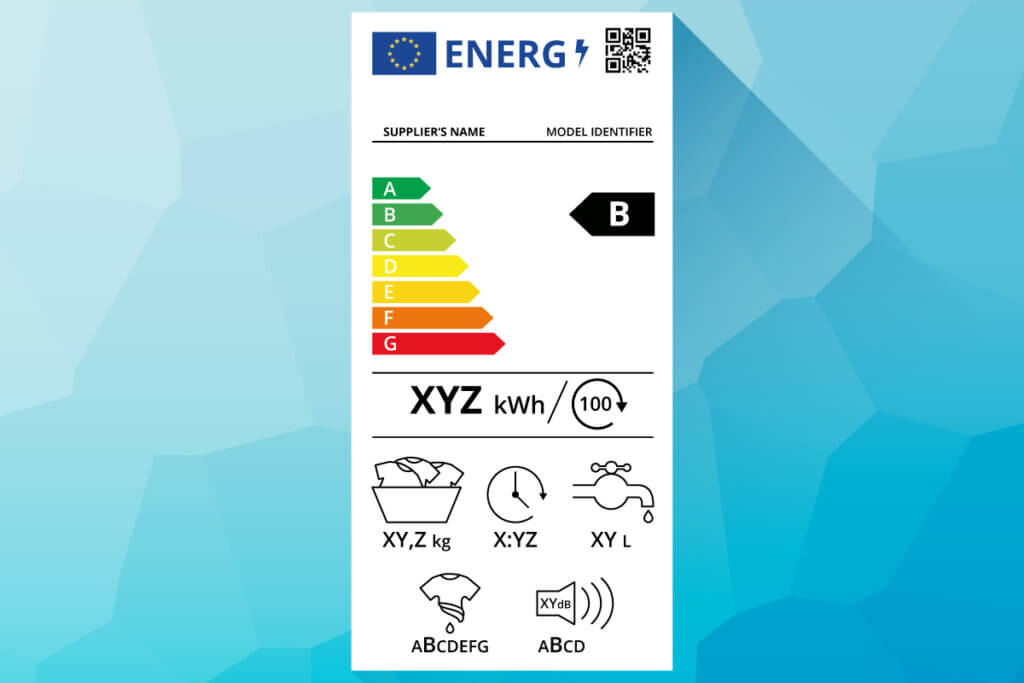
1) The energy efficiency class
Based on the so-called energy efficiency index, tumble dryers are assigned to seven differently coloured energy efficiency classes ranging from A+++ (best possible class) to D (worst possible class).
What is the energy efficiency index based on?
The following factors are included in the calculation of the energy efficiency index:
- The energy consumption of the appliance in the standard cotton programme with full load
- The energy consumption of the appliance in the standard cotton programme with partial load
- The operating state “switched on
- The operating state “switched off
Since December 2015, tumble dryers in energy efficiency classes C and D are no longer available on the market. Since then, class B has been the minimum standard for new appliances. Most condenser dryers belong to this class. In contrast, heat pump dryers usually achieve at least class A.
2) The power consumption
Under the energy efficiency class, consumers will find the average annual electricity consumption of the dryer in kilowatt hours. This is calculated on the basis of 160 dryer cycles in the standard cotton programme with a full load and with a partial load. The appliance dries laundry with an initial residual moisture of 60 per cent to zero per cent moisture content.
Consumption values can deviate
Consumers who use the energy label as a guide must bear in mind that the consumption values given there are based on tests under laboratory conditions. The actual values may therefore be higher or lower, as the conditions of use in the consumer’s home only rarely correspond to laboratory conditions.
3) The unit type
The tumble dryer label tells consumers the type of appliance with a symbol:
- Exhaust air dryer
- Condenser dryer
- Gas powered dryer
Both models with and without a heat pump fall into the category of condensation dryers. The energy label does not indicate whether the dryer is a heat pump dryer. However, this information can usually be derived from the energy consumption of the dryer.
4)The drying time
Like the other consumption values on the energy label, the drying time refers to a drying cycle in the standard cotton programme. Here, the measurement is also based on an initial residual moisture of 60 percent, which is brought to zero percent. Due to the gentler drying process, heat pump dryers usually need a little more time than condenser dryers, often the difference is around 30 to 60 minutes.
5) The loading capacity
The maximum load capacity, which refers to the weight of damp laundry, can also be found on the energy label. It also refers to the standard cotton programme. For other drying programmes, the load capacity may differ. Users can find the information in the operating instructions of their heat pump dryer.
6) The operating volume
At the bottom right of the label, consumers will find the noise level of the appliance during drying in decibels. If you do not want to install your dryer in the basement but in your home, you should pay particular attention to a low operating volume. Quiet heat pump dryers produce about 60 to 65 decibels, which is roughly equivalent to a radio at room volume.
7) The condensing efficiency class
Heat pump and condenser dryers are also divided into different condensation efficiency classes, which also range from A to G, with A being the best possible class. The condensation efficiency class is determined by the ratio of the condensation water collected in the tank to the total water extracted from the laundry. For technical reasons, it is not possible to collect 100 percent of the condensed water in the container. The dryer always releases a certain amount of it into the ambient air. The smaller this part is, the better.
What functions and programmes do heat pump dryers have?
Heat pump dryers differ not only in their construction, capacity and energy efficiency. Depending on the manufacturer and model, they are also equipped with different features and drying programmes.
Practical functions at a glance
Under this section we briefly introduce some of the most common dryer functions.
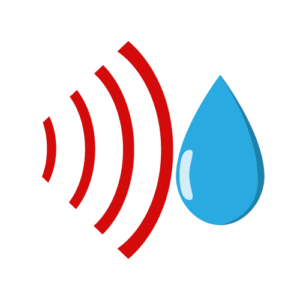
The humidity sensors
Most heat pump dryers have so-called humidity sensors. They measure the residual moisture and the temperature of the laundry during the drying process. As soon as the laundry has reached the selected drying level, the appliance automatically ends the programme. In this way, the dryer saves energy. In addition, the sensor technology prevents shrinkage or creasing of the laundry caused by drying for too long. The name of the technology varies from manufacturer to manufacturer. AEG, for example, calls it “PROSENSE”, while Bosch calls it “AutoDry” and Beko “FlexySense”.
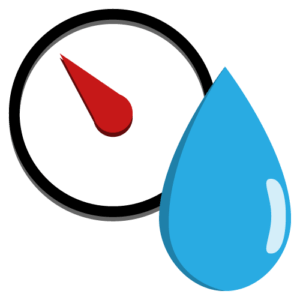
The automatic volume control
Automatic load control is also known from the washing machine sector. Clothes dryers with integrated automatic load control automatically adjust the programme duration and the energy requirement of the appliance to the respective load with the help of temperature and humidity sensors. In this way, they save their users electricity and water and thus money.

The snubber drum
High-quality models in particular are often equipped with a special honeycomb drum. It has a special structure characterised by an evenly unevenly textured surface. This surface creates a cushion of air between the drum wall and the laundry on which the textiles glide during the drying process. In this way, they are dried particularly gently in the drum.

The crease protection
A practical feature is the crease protection. It is particularly recommended for users who tend to forget their laundry in the dryer. If the laundry is not removed immediately after the end of the selected programme, the crease protection switches on automatically and loosens the textiles by rotating them slowly at regular intervals. This prevents the laundry from creasing.
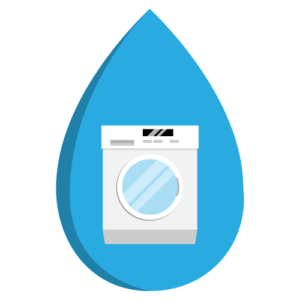
Self cleaning capacitors
Regardless of whether a condenser dryer is equipped with a heat pump or not, it is necessary to clean the condenser regularly. Otherwise, lint will collect, preventing efficient operation and leading to increased electricity consumption. Models with self-cleaning condensers rinse the condenser several times during the drying process, saving users from having to remove lint manually.

The display
Many heat pump dryers are equipped with an LC display. It often shows the selected programme and the remaining time. This gives users a good idea of when they can remove their laundry at the earliest. Some models inform the user when the condensation water tank needs to be emptied and the lint filter cleaned. Some models also allow the user to set the display language.

Start or end time preselection
With the start or end time preselection, users set a time at which a selected programme should start or end. We find this feature quite practical for a washing machine, as it allows working people, for example, to set the time so that a drum of freshly washed laundry awaits them when they get home. On the other hand, the fact that the laundry lies in the drum of the dryer for a certain amount of time waiting for the programme to start before the drying process begins does not seem to make much sense to us.
The programme selection
High-quality heat pump dryers usually offer a wide range of different programmes. For example, there are dryer programmes that are particularly suitable for certain textiles. These include silk or wool programmes that dry particularly gently, cotton programmes for delicate laundry and special programmes for drying shirts, jeans, bed linen or sportswear. If you are in a hurry, a short programme that dries delicate laundry at high temperatures in 30 to 45 minutes comes in handy. Some models also have special programmes for airing, removing lint and smoothing laundry.
In addition, users usually choose between the following drying levels:
- Extra dry
- Cupboard dry
- Iron damp

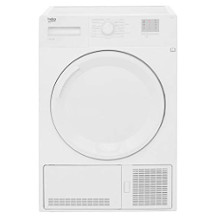
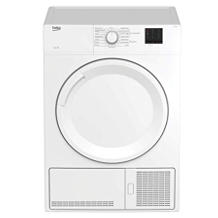
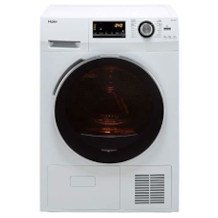
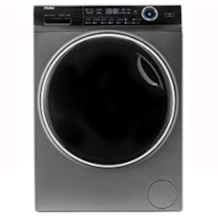
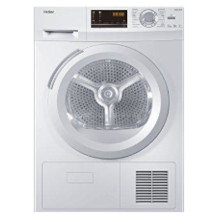




 181 reviews
181 reviews






